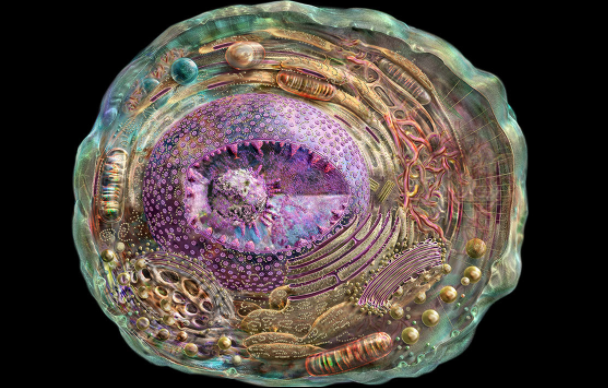Inside the Cell
The cell is the basic building block of life. In our bodies, there are not millions, not billions, but trillions of cells. Different cells have different functions. The four main types of cells are epithelial, muscle, nerve, and connective tissue cells. Epithelial cells come together to form epithelial tissue. Muscle cells join together to form muscle tissues, and so on. Then different types of tissues can combine to form organs. Multiple organs make up an organ system. For example, the circulatory system is made up of organs like the heart, arteries, veins, and lungs.
What exactly is a cell, though? One cell may have many jobs like giving structure to the body, changing nutrients from food into energy, or getting rid of waste. Cells also have DNA, which we learned is the recipe for how our proteins are put together. Inside the cells are organelles, compartments each with specific jobs. The nucleus is the brain of the cell. It is the control center that contains the DNA. Inside the nucleus is the nucleolus, the ribosome factory. Because the nucleus contains such important information, it is protected by a special membrane called the nuclear envelope that only allows RNA and proteins to move in and out. Ribosomes are the organelles responsible for following the genetic recipe to make proteins. Ribosomes are inside the rough endoplasmic reticulum (ER), another type of organelle. Proteins then travel to the Golgi apparatus which sorts the proteins into a transport vesicle, similar to a truck delivering goods. Traffic might get complicated, though, which is where the endosomes come into play. Endosomes are a type of organelle that sorts, modifies, and directs vesicular traffic in cells. Vesicles will then be shipped out of the cell to their unique destination.
Picture Source: sciencemag.org

